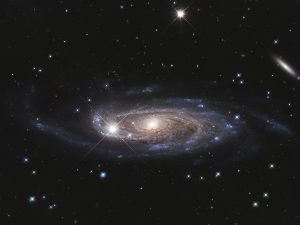Modern estimates predict that at least one supernova event should occur in the Milky Way every few decades or so. But very few have been witnessed even since the advent of the telescope.
Early historical observations that allude to a sudden bright light might suggest a supernova event. In 185CE there appears to be the first supernova witnessed and recorded by man. This was near Alpha and Beta Centauri. Although this claim has been questioned more recently by scholars. Two further observations—in 386 and 393—may have been supernovae. As far as is known there have been only six or seven supernovae in the Milky Way since 1006 (see table).

In modern times about ten supernovae events are recorded each year in the arms of spiral galaxies outside of the Milky Way. There was, for example, a supernova explosion in 1987 in the Large Magellanic Cloud called SN1987a, with a peak apparent magnitude of +2.9. At 170 light years distant it was the closest supernova in 400 years. The body responsible for this was Sanduleak -69 202, a blue supergiant. Astronomers proved the fact since this blue supergiant has now disappeared!
In 2006, astronomers detected a hypernova in the Constellation of Perseus some 238 million light years distant. Nasa later confirmed it to be the brightest stellar explosion ever recorded, a hundred times more powerful than the typical supernova. As such it has been referred to as a “hypernova”.
A suitable candidate for a supernova must be 10 to 20 times as massive as our Sun. Supernovae of the same critical mass explode in the same way, so they act as a standard to measure distance and the rate of expansion of the universe.
| Supernovae in history | |||||
|---|---|---|---|---|---|
| Date (CE) | Constellation | Type | Distance (light years) | Peak magnitude | Notes |
| 185 | Centaurus | -2.0 | Questioned recently | ||
| 386 | Sagittarius | ||||
| 393 | Scorpius | -3.0 | |||
| 1006 | Lupus | I | 3 300 | -7.5 | |
| 1054 | Taurus | II | 6 000 | -3.5 | |
| 1181 | Cassiopeia | II | 26 000 | 0 | |
| 1572 | Cassiopeia | I | 10 000 | -4.0 | |
| 1604 | Ophiuchus | I | 16 000 - 30 000 | -3.0 | |
| 1680 | Cassiopeia | II | 9 100 | +5.0 | |
| 1843 | Eta carinae | 10 000 | -0.8 | Possible supernovae candidate | |
| 1885 | Andromeda | I | 2 200 000 | +6.0 | The only two supernovae discovered in other galaxies |
| 1987 | Doradus | II | 166 000 | +2.9 | SK -69 202 disappears |
| Note: This list is limited to those considered the most reliable observations; though a considerably greater number must have occurred in history. | |||||
The sun
Our Sun is too small to become a supernova. When hydrogen runs out, fusion continues with helium into carbon, then to oxygen, gravity pulling inwards and radiation pushing outwards. When this energy runs out the outer layers will expand, and the inner part will compress to a white dwarf. This will be visible when all the outer layers have dispersed into space.
Our solar system is unusual in that it only has one sun. In far more cases stars exist as binaries. When one of them becomes a white dwarf it starts to suck material away from its partner. It turns into a Type 1A monster, a 20 billion billion billion megaton carbon bomb. It goes into nuclear overload and the carbon and oxygen elements start to turn into iron. It suddenly explodes, and blasts iron trillions of kilometres into space.
A supernova will put out 10 billion times the Sun’s output over its entire life.
Future risk
The nearest danger is Betelgeuse, the main star in Orion, with a diameter about 750 times that of our sun, and around 17 solar masses. It is about 650 light years away. Astronomers note it is now the dimmest it has been in almost a century. It is normally one of the brightest stars in the night sky, but this changed towards the end of 2019, when its loss of luminosity pushed it out of the top twenty. Stars such as Betelgeuse are just too big to live long. At less than nine million years old it is soon to enter its death throes—at least, soon in astronomical terms.
Another tricky customer is Eta Carinae at 7 500 light years distant, which is also close to going supernova. It is binary system with a combined luminosity five million times that of our sun. The primary star is one of the most massive and most visible stars in the sky. Because of the star’s extremely high mass, it is unstable and uses its fuel very quickly, compared to other stars. Such massive stars also have a short lifetime, Nasa explains, “and we expect that Eta Carinae will explode within a million years.”
However, there is another joker in the pack, which astronomers believe could go supernova even sooner than that. In fact, some observers remark “at any moment”. This is WR104, a Wolf-Rayet star, fortunately a little further away from us at around 8 400 light years distant.
By Nigel Benetton, science fiction author of Red Moon Burning and The Wild Sands of Rotar.
Last updated: Saturday, 20 March 2021